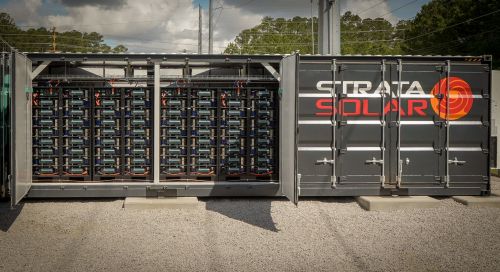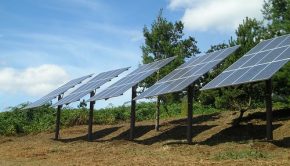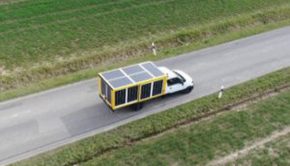Strata Blazes Ahead With California Gas Peaker Replacement Battery, Taps Tesla
Strata Blazes Ahead With California Gas Peaker Replacement Battery, Taps Tesla

Another of the world’s largest battery projects is moving forward with construction in Southern California amid the coronavirus slowdown.
Strata Solar will begin construction in July on its 100-megawatt/400-megawatt-hour battery plant in Ventura County, north of Los Angeles along the coast. County authorities signed off on the final approvals over Zoom, allowing the project to keep on schedule, Strata SVP of Energy Storage Joshua Rogol told Greentech Media. It should be operational by early 2021.
That’s a welcome development for a project that serves as a test case for replacing new natural-gas plants with non-emitting battery storage. Strata’s Ventura Energy Storage project is the largest of a portfolio of batteries that utility Southern California Edison procured in place of a new NRG gas plant on the beach in Oxnard, California.
“We’re going to serve as the backbone resource for the Ventura area,” said Will Mitchell, Strata’s director of origination for the West.
Another grid challenge has risen to prominence in California: preemptive power shutoffs to stop grid equipment from starting wildfires in hot, dry and windy conditions. The Ventura battery, nestled between the Santa Barbara coast and the mountains, will provide a major source of local capacity if transmission lines over the mountains get disrupted due to wildfire risk.
Megapacks, assemble!
Strata chose Tesla as both the engineering, procurement and construction contractor and the supplier for the batteries. Ventura will use the company’s energy-dense new Megapack product.
Strata did extensive research but was impressed with the one-stop-shop service Tesla offered.
“They’re really one of very few suppliers that have a fully vertically integrated solution and have thought about safety and performance of software and hardware from the ground up,” Rogol said.
That also meant one party to deal with when crafting the capacity maintenance agreement, which ensures the project maintains its effective capacity to meet obligations to SCE over 20 years. And Tesla’s data and analytics on battery performance made it easier to analyze the project for financing purposes.
Since the battery is so large, Rogol expected to harness economies of scale by putting the packs in a purpose-built building enclosure. But the company’s analysis showed that a cabinet or container-based approach would actually work better in terms of capital expense, fire safety, insurance costs and permitting, he said.
Energy storage offers growth market for Strata Solar
Strata Solar has installed a few batteries already, but the Ventura project vaults the company into the big leagues. Only a handful of companies have attempted building a battery at the 100-megawatt scale, starting with Tesla in South Australia. But the ranks are swelling constantly; SCE alone signed deals for four more earlier this month.
Now, Rogol said, the percentage of storage in Strata’s overall development pipeline is growing, as is the size of the projects. Strata is looking at projects, two, three and even four times bigger than Ventura.
“That’s indicative of the shift internally and in the market around where value is going and how to capture it,” he said.
Mitchell added that SCE’s newest procurement, totaling 770 megawatts across seven sites, will spur an acceleration of global manufacturing capacity for grid storage.
“There is a growing comfort level with battery storage across the country, without question,” he said.
Per the contract with SCE, the Ventura system will deliver resource adequacy by bidding into the day-ahead CAISO markets. The utility can also make a handful of emergency calls per year in the event of wildfires or other grid constraints.
As long as it fulfills those obligations, the battery is free to maximize revenue elsewhere in the energy and ancillary services markets.
“Generally speaking, we’re going to be charging the battery during peak solar hours, when energy prices are low or negative, and potentially discharging during peak demand hours, when folks are coming home, trying to smooth out that duck curve,” Rogol said.
That expected revenue allowed Strata to drive down the price it contracted with Southern California Edison. The developer is still evaluating whether to build its own market dispatch software or outsource that to an energy trading or AI software specialist, Rogol noted.








